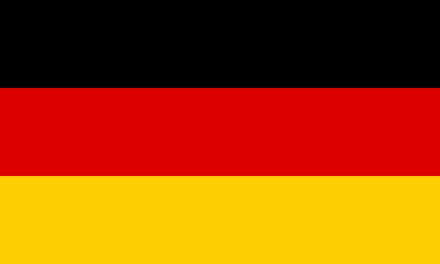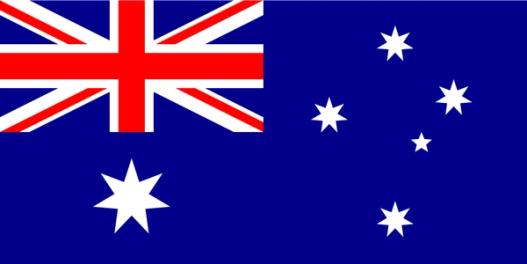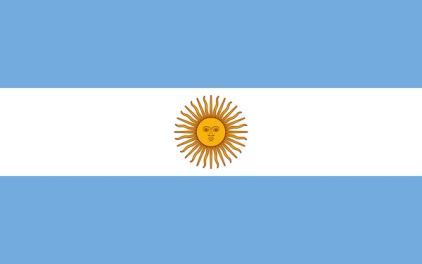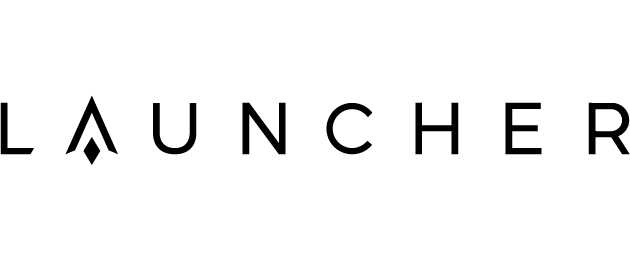This goes
to space
Transporter-8
SpaceX’s dedicated SmallSat rideshare program, Transporter, is designed to lower the cost of access to space for small satellite customers with rideshare flights to Earth orbit. These customers include a variety of space companies, developing nations, university programs, and new startups.
Transporter 8 Payloads:
Exolaunch (Germany)
- DROID.001 (32kg microsat, Turion Space)
- (U, Endurosat, with Rogue hosted payload)
- EIVE (6U, U. of Stuttgart, Germany)
D-Orbit ION (Italy)
- Outpost Mission 0 (3U, Outpost Technologies)
- SpeiSat (“Guardian of Hope”) (3U, Vatican/Italy)
Earth Observant Inc. demo Sat
Satellive Vu
Ororatech/Spire
Tomorrow-R2 (85kg, Tomorrow.io)
ICEYE (2 for ICEYE US)
GHOSt (2x microsat, Orbital Sidekick)
MuSat-1 (59kg, Muon Space)
XVI (12U, AFRL/Viasat)
Skykraft Block III (5 satellites, 300kg total)
FOSSASat FEROX
Tomorrow-R2
ISILaunch

This goes
to space
Orbiter SN3
Manufactured by Hawthorne-based Launcher, Orbiter is an orbital transfer vehicle and small satellite deployment platform compatible with SpaceX's Rideshare program and Launcher’s upcoming small launch vehicle.
Orbiter can perform any combination of maneuvers to modify orbit and precisely place individual satellites in their exact locations.
Orbiter’s first mission, SN1, launched on SpaceX Transporter-6.
Orbiter’s second mission, SN2, launched on SpaceX Transporter-7.
Orbiter has a payload capacity of up to 400 kg and integrates with every Cube and small satellite separation system. With a propulsive capability of 500 m/s delta-V, Orbiter expands the capability of major rideshare missions and more accurately places your spacecraft in its exact orbit.
Orbiter adapts to large launch vehicle ride-share missions and customizes the final satellite orbit. Orbiter is the third stage of the Launcher Light rocket, enabled to reach orbits beyond low-cost ride share.
The vehicle can perform any combination of maneuvers to modify the payload's orbit and precisely place individual satellites in their exact locations. The high-thrust chemical propulsion system ensures maneuvers are accomplished quickly.
SN3 Payloads
- Otter Pup (microsat, Starfish Space)
- MDQSAT-1C/1D (Innova Space, Argentina)
- Pleiades-Squared (Bronco Space, Cal Poly Pomona)
- Nightingale 1 (Cesium Astro, Ka-band comm system computer)
- TRL11-SN3-Demo (TRL11, cubesat deployer)
- Remora (Millenium Space Systems, GNC system)
Credit: Launcher

This goes
to space
Photon - Varda
The Rocket Lab-designed and built Photon spacecraft will provide power, communications, propulsion, and attitude control to Varda’s W-series 120kg capsule that will produce pharmaceutical products in microgravity and return them to Earth.
In addition to providing support during the in-space manufacturing phase of Varda’s mission, the Photon will place Varda’s hypersonic re-entry capsule (carrying finished pharmaceuticals on board) on a return trajectory to Earth.
Varda’s space-manufactured products are targeting small molecule therapeutics and over time larger molecules and biologics — all of which can have higher efficacy when produced in microgravity, while the re-entry capsule provides opportunities to advance hypersonic systems.
This first mission will focus on small molecule formulation to provide insight into retrieved microgravity-grown pharmaceutical crystals, particularly the antiretroviral Ritonavir, an active ingredient in the COVID medication Paxlovid also used in the treatment of Human Immunodeficiency Virus (HIV).
The Photon spacecraft was developed, manufactured, and tested at Rocket Lab’s Spacecraft Production Facility in Long Beach, California. With the final assembly, integration, and test of the spacecraft complete, the fully integrated Varda spacecraft has been shipped to Vandenberg Space Force Base for launch on a commercial rideshare mission, Transporter-8.
This Photon spacecraft is the first of four ordered by Varda to support in-space pharmaceutical manufacturing. Leveraging Rocket Lab’s deep vertical integration, all Photon spacecraft incorporate Rocket Lab-designed and manufactured components and software including star trackers, propulsion, reaction wheels, solar panels, flight software, radios, composite structures and tanks, and separation systems.
“Opening access to space is about much more than launch for Rocket Lab. It’s about making it easier to put the ideas of tomorrow in orbit today, enabling innovation, rapid iteration, and new capabilities that will improve lives back on Earth. This is exactly what the team at Varda is doing by producing novel pharmaceuticals in orbit and we’re immensely proud to make that possible with our Photon spacecraft,” said Rocket Lab founder and CEO, Peter Beck.
“Space Systems is a rapidly growing part of Rocket Lab’s business, and we’re delighted to deliver another spacecraft that leverages our vertical integration strategy for high-quality and cost-effective satellite solutions on rapid timelines.”
Caption courtesy of Businesswire and Rocket Lab. Click here to read the full release.
Varda Space Industries, founded in 2021 and headquartered in El Segundo California, is building products in space to make life better on Earth. They employ 60+ experts including engineers and operators from the likes of SpaceX, Blue Origin, and Sandia National Lab. Varda has completed Series A funding with Khosla Ventures, Lux Capital, Founders Fund, Caffeinated Capital, General Catalyst, and Capital.
Varda’s capsule is near orbital velocity when it enters the atmosphere hitting Mach 25+ before landing on Earth. This offers a real flight environment for vehicle thermal protective materials, avionics, and sensors.
Capabilities
- Recoverable, allowing for easy high-fidelity data,
material, and system recovery post-flight
- Interior and exterior volume for your test articles.
- Low-cost ride share, or dedicated flight
- Dual use from day one assuring continued
operations and cadence for years to come.

On this
rocket
Falcon 9 (Block 5)
Falcon 9 is a reusable, two-stage rocket designed and manufactured by SpaceX for the reliable and safe transport of people and payloads into Earth orbit and beyond.
Falcon 9 is the world’s first orbital-class reusable rocket.
Stats
Completed missions: 582
Total landings: 536
Total reflights: 502
The Falcon 9 has launched 71 humans into orbit since May 2020
Specs
Height: 70 m / 229.6 ft
Diameter: 3.7 m / 12 ft
Mass: 549,054 kg / 1,207,920 lb
Payload to Low Earth Orbit (LEO): 22,800 kg / 50,265 lb
Payload to Geostationary Transfer Orbit (GTO): 8,300 kg / 18,300 lb
Payload to Mars: 4,020 kg / 8,860 lb
On January 24, 2021, Falcon 9 launched the first ride-share mission to Sun Synchronous Orbit. It was delivering a record-setting 143 satellites to space. And while this was an important mission for SpaceX in itself, it was also the moment Falcon 9 overtook United Launch Alliance’s Atlas V for the total number of consecutive successful launches.
SpaceX’s Falcon 9 had become America’s workhorse rocket, launching 31 times in 2021. It has already beaten that record this year, launching almost an average of once a week. While most of the launches deliver Starlink satellites to orbit, the company is still launching the most commercial payloads to orbit, too.
Falcon 9 is a medium-lift launch vehicle, with the capability to launch over 22.8 metric tonnes to low earth orbit. Unlike any other rocket, its first stage lands back on Earth after separating from its second stage. In part, this allows SpaceX to offer the cheapest option for most customers with payloads that need to reach orbit.
Under its ride-share program, a kilogram can be placed in a sun-synchronous orbit for a mere 1.1 million dollars, far cheaper than all other currently operating small satellite launch vehicles.
The reusability and fast booster turnaround times have made Falcon 9 the preferred choice for private companies and government agencies. This has allowed SpaceX to capture a huge portion of the launch market.
Photo courtesy of Jenny Hautmann for Supercluster.

From this
launch site
SLC-4E - Vandenberg Space Force Base, California
Space Launch Complex 4 (SLC-4) at Vandenberg Space Force Base is SpaceX’s west coast launch and landing facility, with its launch pad designated SLC-4E (the eastern-most of the two areas). Originally built in the early 1960s for Atlas-Agena rockets, the pad served that rocket line until 1967, when it was taken offline and rebuilt for Titan IIID rockets. From 1971 to 1988, SLC-4E launched Titan IIID rockets, after which it was reconfigured for Titan IV missions, which continued between 1991 and 2005.
In 2011, SpaceX leased SLC-4E and spent two years rebuilding the pad for its Falcon 9 rocket. From 2013 to 2019, the pad exclusively supported Falcon 9 polar missions. However, in 2020, SpaceX began splitting polar launches between Vandenberg and Cape Canaveral, after the Air Force lifted a 51-year ban on Florida-based polar launches, previously imposed due to the risk of overflying Cuba during launch. Despite these new opportunities from Florida, SpaceX plans to continue utilizing Vandenberg, with many more launches scheduled from this location.
Photo by Supercluster

Booster
lands here
Landing Zone 4 (LZ-4) - Vandenberg Space Force Base, California
Landing Zone 4 (LZ-4) is SpaceX’s only West Coast landing pad for the Falcon 9 first stage. Activated in 2018, the pad was constructed on the site of the former SLC-4W launch pad at Vandenberg Space Force Base in California.
SLC-4W was originally developed between 1963 and 1965 to support Atlas-Agena rocket launches and was located just 427 meters (1,400 feet) from SLC-4E. After the Atlas-Agena program ended, the pad was rebuilt for the Titan IIIB rocket program, which operated from 1966 to 1987. Following the retirement of the Titan IIIB, SLC-4W was reconfigured for Titan 23G rocket launches from 1988 to 2003.
In 2015, SpaceX leased SLC-4W, renaming it Landing Zone 4 and converting it into a dedicated landing site for Falcon 9 first stages. The first Return-To-Launch-Site landing of a Falcon 9 at Landing Zone 4 occurred on October 7, 2018, after the successful launch of the SAOCOM 1A satellite.
Photo courtesy of Pauline Acalin for Supercluster

GET THE SUPERCLUSTER APP
THE SUPERCLUSTER PODCAST
A podcast exploring the amazing milestones that changed space history, the wildest ideas that drive our future, and every development in this new Golden Age of Space.
Donate to support
Your support makes the Astronaut Database and Launch Tracker possible, and keeps all Supercluster content free.
SupportCOPYRIGHT 2021 SUPERCLUSTER LLC










